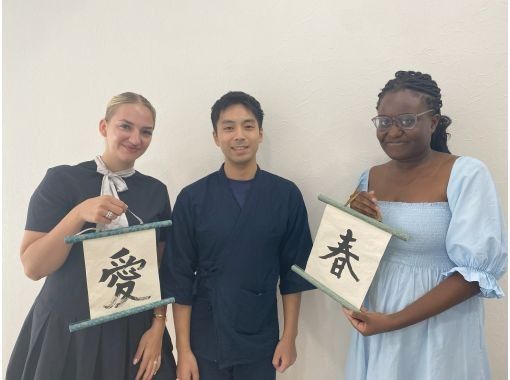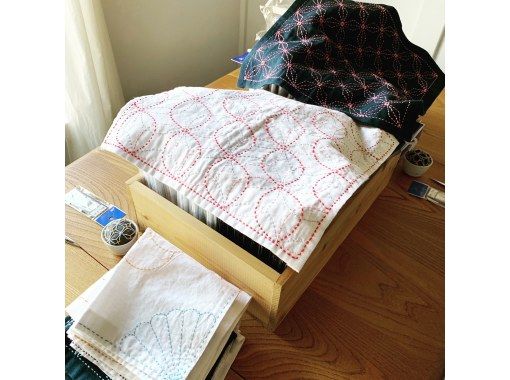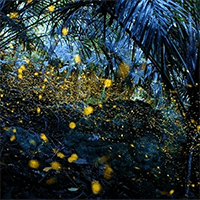Kanto Reservation for Japanese crafts making / Japanese miscellaneous goods | Activity Japan
- Age 1~Age 100
- Within 1 hour
- 10:00 / 11:00 / 13:00 / 14:00 / 15:00 / 16:00
Why not try painting an auspicious papier-mâché doll with your own original design at the popular Japanese culture experience cafe in Asakusa? Papier-mâché is a doll made by creating a frame out of wood and pasting washi paper on it. It originally originated in China, but is said to have been introduced to Japan during the Heian period. There are many different shapes, but many of them are in the shape of animals, and they have become treasured as lucky charms. First, choose your favorite plain body. Once you have decided on the body, use your imagination and paint your ideas with paint. Our staff will support you, so even beginners can have fun creating. Papier-mâché dolls are hollow and very light, so they are very popular as travel souvenirs. [Types of bodies to choose from] ▶ Daruma dolls "Daruma dolls" have a rounded shape and the fact that they "get up no matter how many times they fall down," and they have been treasured as talismans and lucky charms since ancient times. Papier-mâché daruma dolls are used for all kinds of wishes, such as warding off evil, making the family happy, and making wishes come true, so they are used for prosperity in business and winning. ▶Lucky catsLucky cats used to be a lucky charm for sericulture because they exterminate mice that eat crops and silkworms, but since sericulture has declined, they have come to be seen as a lucky charm for business prosperity. There is a theory that lucky cats were originally made using the "Imado ware" pottery technique that was produced around Imado-cho in Asakusa. *There are various theories*Depending on the stock situation, we may not be able to provide the body you want.
- Age 18~Age 80
- Within 1 hour
- 11:00
"Mizuhiki" is a decorative string used for gift envelopes and gifts. It is a traditional Japanese craft that is processed by coloring and winding kinshi. Recently, it has been arranged into Japanese modern accessories and interior goods. In this course, you will learn the basic awaji knot and plum knot, and combine it with your favorite Japanese paper to make an original bag.
- Age 10~Age 100
- Within 1 hour
- 10:00 / 11:00 / 13:00 / 14:00 / 15:00 / 16:00
Why not make a Mizuhiki accessory that brings happiness at the popular Japanese culture experience cafe in Asakusa? Mizuhiki is a decorative cord used on the front of gift envelopes and condolence envelopes, and is mainly used for engagement gifts, gift covers, New Year decorations, etc. The beauty and delicacy of curves are unique to Japanese culture, and there are deep meanings and commitments to the way they are tied and the number of strings, and the type used varies depending on the occasion. Recently, it has been used in a wide range of applications, including decorations, accessories, and interior decorations. Our store offers many colors and types of Mizuhiki. From beginners to advanced users, aim to complete your work to the best of your ability! Our staff will support you, so even beginners can enjoy creating. Mizuhiki is recommended as a present because it means connecting people to each other, as it is tied with a string. Mizuhiki is also light and small, making it a great souvenir for travel. [Types of metal fittings to choose from] ・Earrings ・Key chains ・Straps
- Age 2~Age 100
- Within 1 hour
In a way to bond the colorful glass in a high fever, to arrange the Italian Venetian glass (millefiori), you can create your own original chopstick rest. Perched small but, there is a strong presence chopstick rest. Experience is simple. Venetian glass is put on top of the base, only temporarily fixed with glue! Colorful glass is melted together, why not make a beautiful chopstick rest.
- Age 1~Age 100
- Within 1 hour
- 10:00 / 11:00 / 13:00 / 14:00 / 15:00 / 16:00
Why not paint a fox mask with your own original design at the popular Japanese culture experience cafe in Asakusa? Fox masks are a type of traditional Japanese mask, especially related to Shinto and folk beliefs. Foxes are sacred beings in Japanese myths and legends, and are especially worshiped as messengers of the Inari god. Fox masks play an important role in these beliefs and festivals. First, choose your favorite fox mask and paint your favorite colors and designs on the white mask. Use various paints, from acrylic paints, to paint your ideas with paint. The staff will support you, so even beginners can enjoy creating. The traditional atmosphere of Asakusa and the mysterious elements of the fox mask combine to create a special experience. [Types of fox masks to choose from] ・Full (fox mask) ・Half (fox mask) ▶Fox masks Fox masks are used in Nohgaku (a general term for Noh and Kyogen) and Kagura (dance and song performed to worship the gods). They are often considered to be auspicious, as they are enshrined as messengers of the gods at Inari Shrine. In addition, fox masks are said to bring good fortune such as bountiful harvests, prosperity in business, and safety in the home. *Depending on the stock situation, we may not be able to provide the body you want.
- Age 2~Age 100
- 3~4 hours
- 10:30
We start by splitting real bamboo and making a platform for nagashi somen! We harvest the vegetables to be cooked in the pesticide-free vegetable field and cook them together. The menu is vegetarian (vegan). Enjoy freshly picked seasonal vegetables. Nagashi somen is an experience where you neatly assemble split bamboo and eat the noodles that flow under water. The nagashi somen platform made from real bamboo is very beautiful, fun and a wonderful experience. After the meal, you can also try your hand at bamboo crafts if you wish.
- Age 6~Age 90
- 2~3 hours
- 10:00 / 12:00 / 14:00 / 16:00
Draw calligraphy or a painting and have it turned into a traditional Japanese "kakejiku" (hanging scroll). By finishing it as a kakejiku, your work will be beautifully preserved for over 100 years and will become a lifelong memory to decorate your home. By turning your handmade work into a kakejiku, you can experience Japanese culture in depth. Our company was founded in 1936 and has been providing traditional crafts for over 80 years. By drawing calligraphy or a painting with a brush and ink, you can enjoy a unique Japanese experience. Kakejiku uses techniques with over 1000 years of history to create a work of wabi-sabi that is refined for beauty and preservation. You can choose to make a full-fledged kakejiku or a simple magnetic tapestry, and take home the work you made that day.
- Age 8~Age 80
- Within 1 hour
- 11:00
"Mizuhiki" is a decorative string used for gift envelopes and gifts. It is a traditional Japanese craft that is processed by coloring and winding kinshi. Recently, it has been arranged into Japanese modern accessories and interior goods. In this course, you will learn the basic awaji knot and plum knot, and combine mizuhiki of your favorite colors to create an original bookmark. You can also make an arrangement rabbit ♪
- Age 1~Age 100
- Within 1 hour
- 10:00 / 11:00 / 13:00 / 14:00 / 15:00 / 16:00
Why not make your own original art fan or fan at the popular Japanese culture experience cafe in Asakusa? Choose from the traditional Japanese crafts of "fan" or "uchiwa", decorate it with your own ideas, and make your own unique fan or fan. You can easily enjoy decoration using stamps, markers, watercolors, etc. No special skills or drawing skills are required. You can create your own unique fan or fan by freely choosing the type and color of stamps and applying an original design. By incorporating modern stamp art into a traditional fan, a new art piece that combines tradition and modernity is born. The staff will support you, so even beginners can enjoy creating. Your original fan will be a special item that you made yourself and will be a memorable and important item. It is also popular as a personal favorite item. *This experience is an experience where you paint a plain fan or fan yourself.
体験料3500円に見合わない。机の上に紙とスタンプ、絵の具、クレヨンなどの用意がされていましたが、説明はわかりきったことをほんの10秒程度。どんなやり方があるか例を聞くと「うちのインスタ見て下さい」と。インスタを見ると扇子の投稿は1〜2のみ。実物の見本もありましたが、子供さんのお絵描き程度のものです。スタンプは種類も少なくスタンプ台の色は出ず、筆はバサバサ、扇子の下に当てるゴム台もサイズが全く合っておらず小さくて、段ができてスタンプもうまく押せませんでした。道具は汚れていて扇子にも付着してしまい残念としか言いようがない体験でした。
- Age 10~Age 100
- 1~2 hours
- 10:30 / 13:30
You can experience gold leaf application, a typical traditional craft. In this course, you will choose your favorite vessel and finish the original vessel. Since stickers with various designs are available, it is relatively easy to work with, and you can also use a cutter to create your own design. The shop is located in Nihonbashi, Tokyo, where many long-established traditional craft shops gather. During the Edo period, it prospered as a base for commerce and logistics, and even now you can feel the atmosphere of Edo culture everywhere. Why don't you experience gold leaf pasting, a traditional Japanese craft, while enjoying a walk before and after the experience?
- Age 10~Age 100
- 1~2 hours
- 10:30 / 13:30
This is a course where you can experience one of the representative decoration techniques of lacquerware, "Makie". “Kakoku” is to decorate and beautify the surface of the product. It is a decoration technique to attach. We use cashew paint, which is a non-irritating synthetic resin paint, so that you can enjoy it safely. In this course, you can choose one of your favorite bowls and finish the original bowl by drawing pictures and letters with die-cutting and freehand. If you use the prepared designs, even people who are not good at drawing can easily work, and you can also bring your own original design and draw freely. “Kitanihonbashi Yumehigashi Main Store” is located in Nihonbashi, Tokyo, where many long-established traditional craft shops are gathered from the Edo period. Muto, the organizer, is a long-established company with history and tradition as a wholesale store specializing in lacquerware that has been in business for over 100 years. A workshop instructor with specialized skills will teach you carefully. The real thrill of the experience is the moment when the colors change when the sown powder is wiped off. How about experiencing Maki-e, a unique Japanese traditional technique?
- Age 6~Age 80
- Within 1 hour
- 11:00
"Ise Katagami" is used for dyeing kimonos. It is a traditional craft technique that has been passed down in Suzuka City, Mie Prefecture for over a thousand years. ``Ise Katagami'' is made by a craftsman called a katagami, who uses a chisel to carve intricate patterns and designs onto durable Japanese paper. It is surprising that more than 900 patterns are carved into a single inch (approximately 3cm) corner using a very fine piece of material. This time, we will be dyeing postcards using a pattern carved by Chiaki Imazaka, a traditional craftsman. Why not dye it in your favorite color, create an original postcard, and send it to your loved ones with a message? We also have 6 different designs of this year's zodiac signs, ``Dragon'' and ``Seahorse.'' We recommend sending it to a loved one or to yourself as a memento of your trip to Tokyo.
私と12歳の息子が参加しました。 2人で とても時間をかけてゆっくり やらせてもらって、 出来上がりもとっても満足!簡単にできますが意外と集中してできちゃう感じで す。 お店もとても可愛くて店内にあるものも全部欲しくなっちゃうくらいでした。
- Age 3~Age 100
- Within 1 hour
- 10:00 / 11:00 / 13:00 / 14:00 / 15:00 / 16:00
Why not make your own original goshuincho at the popular Japanese culture experience cafe in Asakusa? Goshuincho are used by worshippers to keep a record of their travels and pilgrimages and visits when they visit Japanese temples and shrines. First, you can make an upcycled goshuincho that is kind to the earth, using recycled materials such as scraps from the kimono manufacturing process, used paper bags and wrapping paper. Choose your favorite pattern from the materials and make your own favorite goshuincho! The staff will support you, so even beginners can enjoy creating. If you visit shrines and temples with your handmade goshuincho, it will become a deeper memory. ●What is upcycling? It is to give new added value to things or unnecessary items that would otherwise be discarded, upgrade them into new products, and reborn them. In order to switch from a consumer society in which things are mass-produced and consumed to a sustainable society, the keyword upcycling is very important.
- Age 8~Age 80
- Within 1 hour
- 11:00 / 13:00 / 14:30
Would you like to make your favorite pouch accessories using Japanese cloth and paper? The popular pouch-making workshop is now available at all times. You can make a thin accessory case that can also be used as a card case, a seal case, a pen case, a glasses case, and a chibi pouch without sewing at all. The fabrics and papers you can choose from are Arimatsu Shibori, Ise Momen, Edo Komon Tenugui, Noto Jofu, Fujimoto Dye Crafts dyed fabric, Edo Karakami, and Kaga Futamata Washi. A total of 4 courses to choose from. If you make a regular reservation, you will receive the A course ``Thin accessory case & small pouch''. If you would like courses B to C, please make a reservation from the options. ------------------------------A course (duration approximately 1 hour) Thin accessory case & chibi pouch 3,500 yen B course ( Time required: approx. 1 hour) Seal case, chibi pouch, 3,800 yen C course (time required, approx. 1 hour) Pen case & chibi pouch, 4,000 yen D course (time required, approx. 1 hour) Glasses case & chibi pouch, plus 4,500 yen --- ---------------------------Instructor: Yuko Setoguchi (cokoworks no-sew Gamaguchi (R) certified instructor who does not use needles or threads)
- Age 18~Age 80
- Within 1 hour /1~2 hours
- 11:00
Using the traditional craft "Ise Katagami", which has been passed down in Suzuka City, Mie Prefecture for over 1000 years, the cloth is stencil-dyed. "Ise Katagami" is made by a craftsman called a stencil carver who carves intricate patterns and designs on durable Japanese paper with a carving knife. It is surprising that more than 900 patterns are carved into a one-inch square (about 3 cm) with fine details. Try it out and experience its delicacy and beauty. You can choose the cloth to be dyed from handkerchiefs, tea mats, and coasters.
- Age 3~Age 99
- 2~3 hours
- 10:00 / 14:00
[Make only one original T-shirt in the world! ] You can freely dye a pure white T-shirt in your favorite color and pattern with the technique of tie-dye dyeing! You can take the dyed items home on the same day! Recommended for families as it can be enjoyed by adults and children! [Waiting time is in the relaxing lounge ♪] You can wait in the relaxing lounge for the reception and waiting time until the color is settled. Even those who do not participate can wait in the lounge, so please join us ♪ [Choice of plan lineup] 1, Plan with adult plain T-shirt (junior high school students and above) 2, Plan with children's plain T-shirt (elementary school students and younger) 3, Adult possession Included T-shirt plan 4, Children bring-in T-shirt plan 5, Eco tote bag (A4 size) plan [Activity Japan privilege] Next time ¥ 500 off ticket present ♪ ~ Flow of the day ~ 1, Visit 2, Design decision 3, Design making 4 , Start dyeing ♪ Wait 5,30 minutes to 1 hour , Completed!
- Age 15~Age 100
- 1~2 hours
- 10:30 / 11:00 / 11:30 / 12:00 / 12:30 / 13:00 / 13:30 / 14:00 / 14:30 / 15:00 / 15:30 / 16:00 / 16:30 / 17:00
What you'll doYou have an experience of Sashiko embroidery stitching through making "Sashiko fukin"."Sashiko fukin" is known as dish towel in Japan and very popular Sashiko learning item for novices. This item is very practical. After finishing to make, you can use it as handkerchief, lunch mat, wrapping something like sandwich, flower base mat etc.The size is approx. 33cm×33cm.Although you cannot finish the stitching during the experience, you will get knowledge and skill how to complete it by yourself. Therefore you can enjoy the stitching even at home.Step 1: Choose a Sashiko pattern and a thread color.I've provided you with many sort of Sashiko cloths which is printed on a fabric and thread colors. Please enjoy picking your favorite one out.Step 2: Preparation.I introduce how to treat for a fabric and a thread before doing stitch.Step 3: Do Sashiko stitching.After showing my demonstration to you, you will start stitching on the cloth you chosen. This time makes you enjoy and relax!Step 4: Explain Sashiko basic role and tips.Before closing the session, I explain about general order of stitching, things to watch out for, tips and so on.
We really enjoyed our sashiko workshop. Keiko is very friendly, and knowledgeable about the craft. As intermediate and beginner stitchers, my friend and I both learnt new tips for sashiko technique.
最近チェックしたプラン
Please wait a moment
![[Tokyo, Asakusa] Paper Mache Painting Experience: Make your own original Daruma and Maneki Neko!の画像](https://img.activityjapan.com/10/48701/10000004870101_xfMLWcLI_3.jpg?version=1730344982)
![[Tokyo Asakusa] Let's make a mizuhiki bagの画像](https://img.activityjapan.com/10/43995/10000004399501_NIvm6fKU_3.jpg?version=1695798366)
![[Tokyo・Asakusa] Making Mizuhiki Accessories Let's make Mizuhiki accessories that bring happiness! の画像](https://img.activityjapan.com/10/36216/10000003621601_XJ5Atgpp_3.jpg?version=1714008603)
![[Kanagawa/Hakone] Fusing experience-"Chopstick rest making" easy even for beginners! Hakone immediately from Yumoto Station!の画像](https://img.activityjapan.com/10/12356/10000001235601_oFLgGizp_3.jpg?version=1580099393)
![[Tokyo, Asakusa] Fox mask painting experience. Make your own original fox mask!の画像](https://img.activityjapan.com/10/56713/10000005671301_xfMLWcLI_3.jpg?version=1730344866)
![[Machida, Tokyo] Vegetable harvesting experience at a mountain top field, vegetarian cooking experience, and nagashi somen experienceの画像](https://img.activityjapan.com/10/55707/10000005570701_1IgGyMt8_3.jpeg?version=1722912062)

![[Tokyo Asakusa] Let's make a bookmark with mizuhikiの画像](https://img.activityjapan.com/10/52561/10000005256101_sYT2aRuE_3.JPG?version=1705730045)
![[Tokyo, Asakusa] Art Fan/Uchiwa Fan Painting Experience Make your own original art fan or fan!の画像](https://img.activityjapan.com/10/50476/10000005047601_SvzPizbd_3.jpg?version=1713592982)
![English OK! [Tokyo/Nihonbashi] Experience traditional crafts at a 100-year-old lacquerware specialty store ~Gold leaf pasting experience~の画像](https://img.activityjapan.com/10/50109/10000005010901_atFOJjl6_3.jpg?version=1691470157)
![English OK! [Tokyo/Nihonbashi] Makie experience at a 100-year-old lacquerware specialty storeの画像](https://img.activityjapan.com/10/50107/10000005010701_atFOJjl6_3.jpg?version=1691469782)
![[Tokyo Asakusa] Let's dye postcards with Ise Katagamiの画像](https://img.activityjapan.com/10/49603/10000004960301_b1VXth0P_3.jpg?version=1726380962)
![[Asakusa, Tokyo] Upcycled Goshuincho (stamp book) Making your own original Goshuincho (stamp book) that is kind to the earth!の画像](https://img.activityjapan.com/10/48704/10000004870401_XJ5Atgpp_3.jpg?version=1714008423)
![[Tokyo/Kappabashi] No-sew pouch made from Japanese cloth and paperの画像](https://img.activityjapan.com/10/45899/10000004589901_nkLPhUkC_3.JPG?version=1710836225)
![[Tokyo Asakusa] Let's dye cloth accessories with Ise Katagamiの画像](https://img.activityjapan.com/10/43994/10000004399401_ftcqymZd_3.jpg?version=1700217693)
![[AJ benefits available] Tie-dye dyeing experience ☆ Making one original T-shirt in the world ♪の画像](https://img.activityjapan.com/10/29378/10000002937801_TDsQrUEf_3.JPG?version=1654914135)








